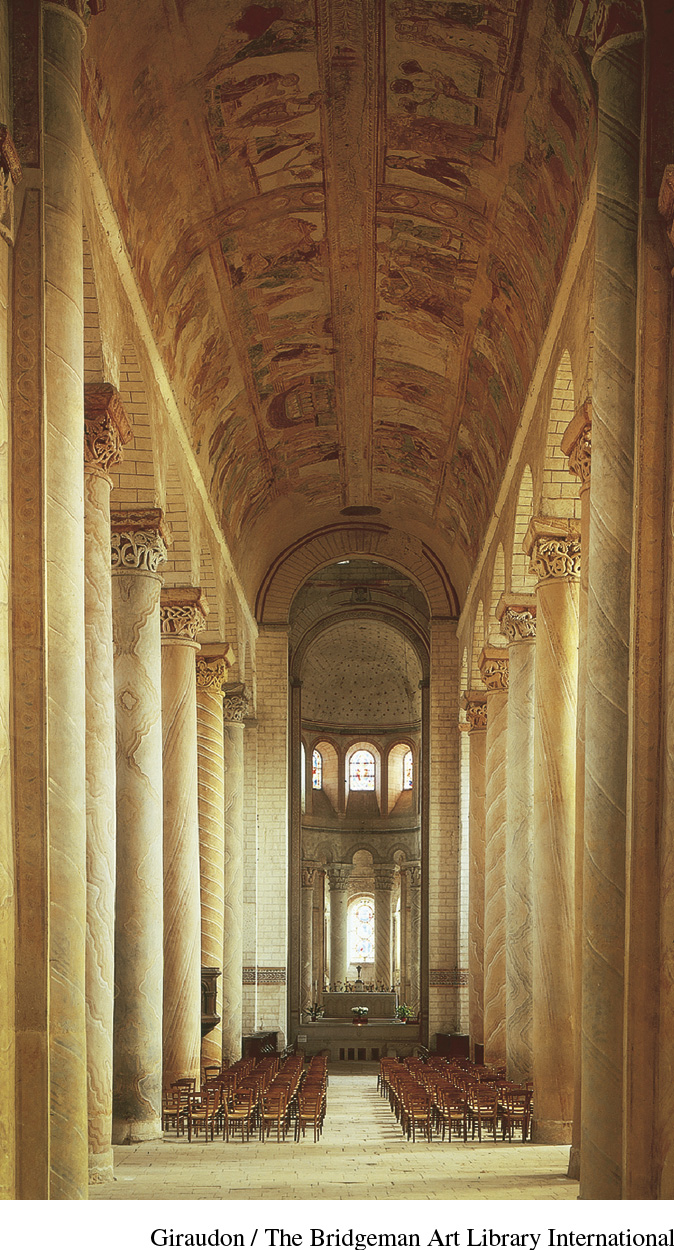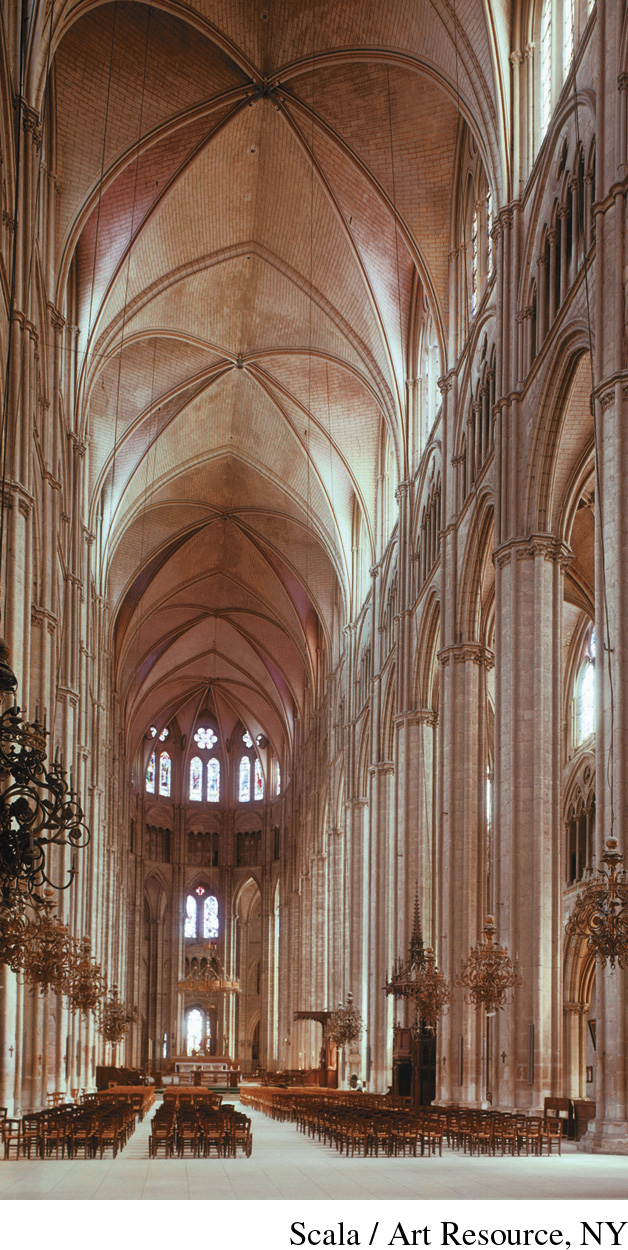Seeing History:
Romanesque versus Gothic:
The View Down the Nave
Printed Page 377
Important Events

When you enter a church, which, in the Middle Ages, you always did from the west end, you find yourself looking down its nave, toward the choir and the altar (the focal points of the church). That view changed over time, and the change tells us a lot about new architectural tastes in the Middle Ages. The church on the left, Saint-Savin, built near Poitiers, in France, in the early twelfth century, is a representative Romanesque church. The one on the right is Bourges, a Gothic church built (about a hundred miles to the east of Saint-Savin) around a century later. Comparing the views down the nave systematically will allow us to discover what makes the Romanesque and Gothic styles distinctive. You might first consider the vaults. Which one is more like a tunnel, and what contributes to that effect? Does one interior create more of a soaring effect? How? What elements of the architecture contribute to this impression? Which one has paintings? Which one lets in the most light? What architectural features make this possible? In which church are the capitals of the columns (the very tops) elaborately carved? In which one are the columns themselves highly articulated, with multiple pillars?
Question to Consider
What are the main features that make Bourges a “Gothic” church?